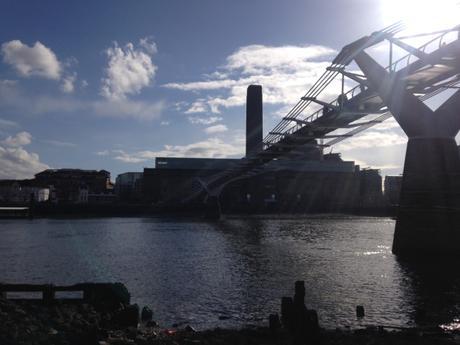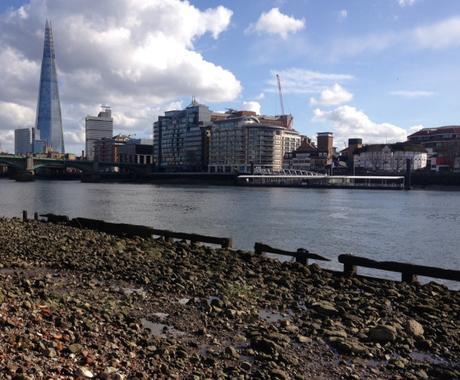
Last week, I fulfilled a lifelong dream of being a mudlarker on the Thames. When I was at primary school, a man came in to talk to us about the treasure that could be found on the banks of the river, and showed us some of his haul. Clay pipes, pottery, even Roman coins; the thought that all of this was just floating about in the Thames, ready to be picked up by an eagle-eyed passer by, was incredible. Obviously I went home and told my mom all about it, and begged her to take me mudlarking so that I could find Roman coins of my own. My mum, unsurprisingly, was less keen on the idea, and so my dreams of discovering treasure amidst the detritus of centuries worth of rubbish slowly died. Over the years I have often seen people pottering about down on the river banks, but I never felt that I could join them. I wouldn’t know where to look, or even what to look for. The whole concept of mudlarking seemed silly and fanciful, and so it merely remained a wistful and much treasured memory of my childhood, destined, I thought, never to see the light of day.

Until I taught my current Year 7 class about Roman Britain, that is, and I happened to tell them about the man who came in to talk to me when I was at primary school, and who showed me the Roman coins he had found on the banks of the Thames. My students, with eyes like saucers, demanded to be taken to find their own Roman treasure, and I thought, why on earth not? Finally, I would have the chance to fulfill my own dream, and get a day out of the classroom to boot! So, I looked into our options, found a wonderful tour run by the Thames Explorer Trust in conjunction with the Museum of London, and promptly booked us on. Trussed up in wellies and waterproofs, we went to the museum for a workshop, where we learned all about the different types of objects we might find on the river bank and how we could tell the age of the most common things we were likely to come across. It was absolutely fascinating; the bits and pieces of broken pottery, masonry, clay pipes, oyster shells etc that are scattered across the muddy banks are a window into the social history of London, revealing the habits of the people who walked the same streets I do every day, as well as the changing make up of London and the significant events of its past. I had no idea that it was still possible to find roof tiles that were thrown into the Thames after the Great Fire, or that there are so many clay pipes in the river because they were the equivalent of cigarettes. I also had no idea that oyster shells were the equivalent of our fast food wrappers, and that so many have holes in them not because they’ve been eroded in the waters over time, but because Victorians used to use them to make spare buttons. It’s amazing to think that so much of this history is still here, and in plain sight, too. It’s just lying there, waiting to be discovered.

And that is exactly what we went on to do. Just a few yards from the museum are steps down to the river bank, and as soon as we set foot on the rocky slip of sand beneath the Millennium Bridge, we started finding treasure. Without even needing to dig or move any stones, we could pick up clay pipes, pieces of pottery, old glass and tiles. We were amazed at the ease in which we filled up our little bags with colourful shards of pottery, some of which was medieval, as well as 17th century glass and a very impressive collection of clay pipe bowls. I was thrilled to find a lovely selection of bits of white and blue pottery, as well as my own clay pipe, which was the only thing I really wanted to find, having been so amazed by the ones the man who came to my primary school had shown me all those years ago. We trooped back to school feeling like archaeologists, and though we hadn’t found any Roman coins, we had discovered so much about the history of our city and how much we can learn from the rubbish we leave behind. It was such a remarkable adventure and one I plan on repeating again soon. There’s nothing like a spot of mudlarking to connect you with the history of London and make you feel like a character in a Dickens novel. And best of all, it’s completely free! Just make sure you check the times of the tide before you go.
ps. mine and Simon’s latest podcast is now live – you can listen here!
